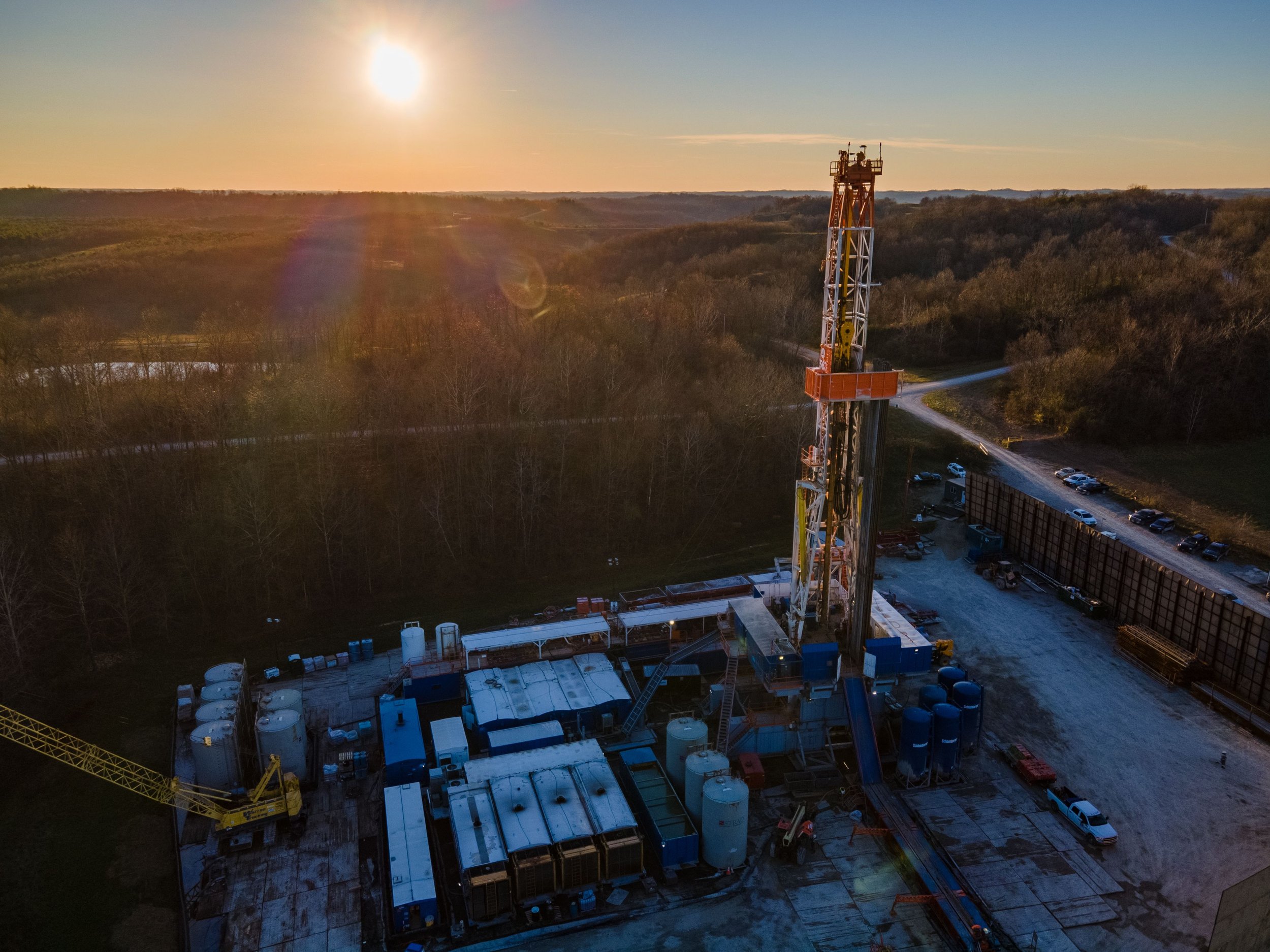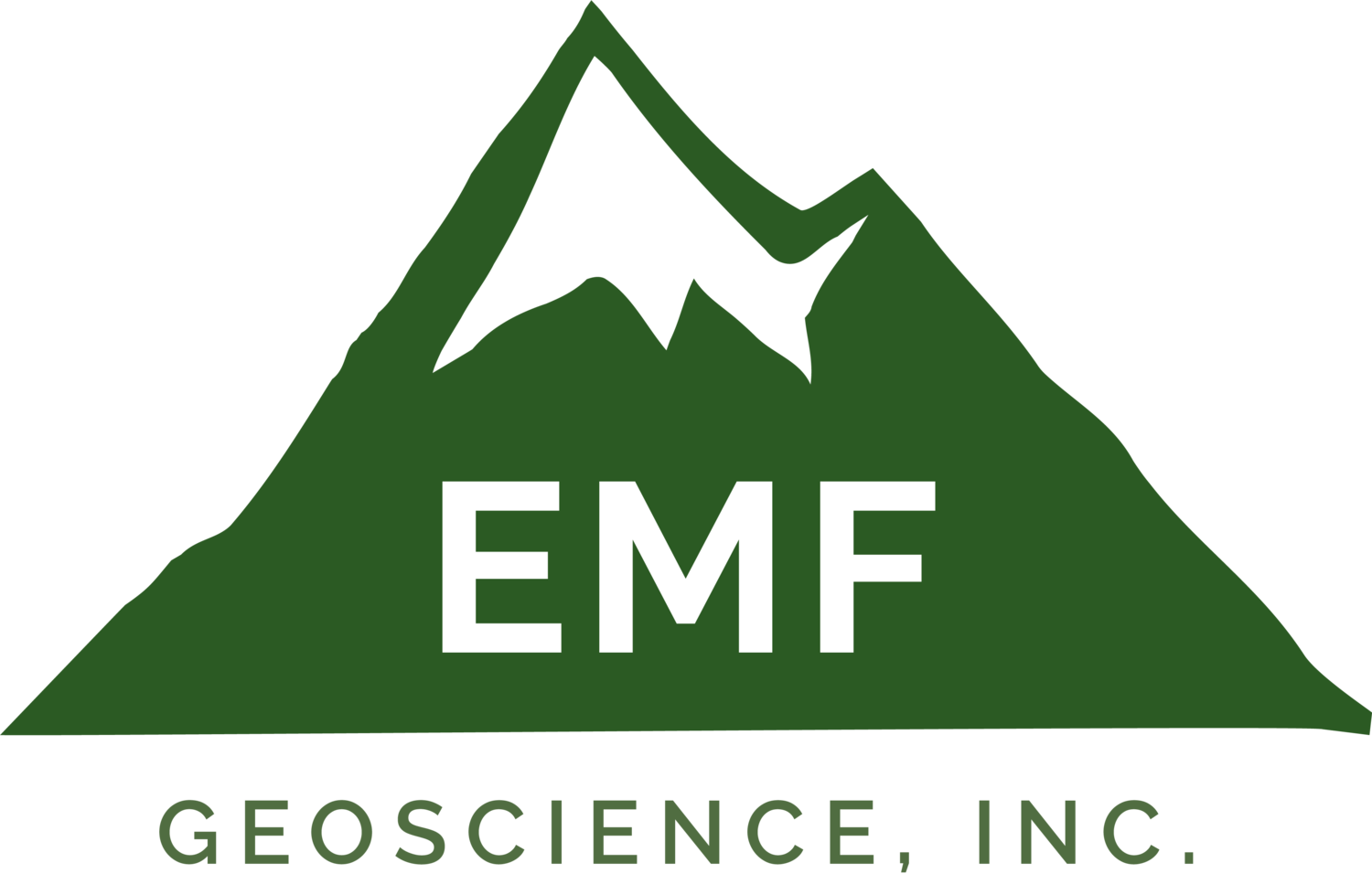
EMF GEOSCIENCE, INC.
Your Partners in the Subsurface
Emf News
9-29-2025
"Point Pleasant Formation K-Bentonites of Southeastern Ohio” is the first of three chemostratigraphic white papers covering six Point Pleasant cores located in southeastern Ohio. Subsequent white papers will cover Point Pleasant Condensed Interval (target interval) identification and core to log analysis of the Point Pleasant Condensed Interval. The Bentonites are a wonderful time marker as our group correlates the optimal target zones across the Appalachian Basin in the Utica/Point Pleasant.
2-29-2024
EMF Geoscience has purchased a Vanta M Series Handheld XRF and started collecting geochemical data from in-house Point Pleasant cores in September 2023. The primary goal of this Chemostratographic study is to define the Condensed Interval inside the Point Pleasant Formation.
The basis for this study can be found in Zachary Fernandez’ Master Thesis completed at Ball State, Identifying the Point Pleasant formation’s condensed intervals with XRF chemostratigraphy. Zachary’s Thesis can be found HERE.
Dr. Jeff Grigsby, Professor Emeritus of Geological Sciences at Ball State, is managing data collection procedures and chemostratigraphic interpretation of the XRF data.
EMF has also recently used the handheld XRF to identify the chemical composition of well-bore precipitates
2-6-2024
EMF Geoscience has interpreted three high relief Precambrian Unconformity landforms (Structures) in east central Ohio with 3D seismic. The Cambrian Mount Simon Sandstone is truncated against the Structures and overlying younger Paleozoic formations are draped over the Structures. Elevated geothermal gradients are also observed near the Structures. “3D Seismic Imaging of High Relief Precambrian Landforms in East-Central Ohio” is an overview of the Structures with thirteen figures that include Precambrian Unconformity iso-time maps, seismic panels, and an overlay of the Structures on the Ohio Total Intensity Aeromag Map.
9-26-2023
Large scale geothermal maps miss the details. In Ohio we have been finding wells with bottom hole temperatures approaching 200 degrees within Ordovician Knox wells. Just like getting closer to a fire it only gets hotter as you move towards the heat source. "Focused Heat Source Geothermal Potential in Eastern Ohio," is a white paper by EMF Geoscience that documents the use of geothermal gradient mapping. Precambrian Basement heat sources identified on 3D seismic and linear/accelerated geothermal gradient models will estimate a range of temperatures possible at the focused heat source. The conclusion is that geothermal gradient mapping used in conjunction with 3-D seismic may provide a pathway to defining localized heat sources coming from the Precambrian Basement through hydrothermal vents. These vents could then be utilized for energy extraction and/or power generation.
9-8-2023
The Beekmantown Dolomite remnant play in eastern Ohio involves abandoned karst aquifers preserved in hills or remnants that are subsequently buried by deposition of sediment as sea level rises. The deposition of the dolomitic Glenwood Shale and limy Lower Chazy Shale on the Post-Knox Unconformity surface forms the trap and seal for the karst reservoir. As deposition continues the Glenwood and Lower Chazy Shales compact to about 63% of their original thickness transforming the remnant into a sealed container.
The Differential Compaction video presented here is a visualization of the sedimentary deposition at the end of the Post-Knox Unconformity. The video starts with a snapshot of a Beekmantown remnant at the end of the Post-Knox Unconformity. As sea level rises the remnant is buried by the Glenwood and Lower Chazy Shale fill deposits. As deposition of the Gull River, Upper Chazy, Black River, and Trenton continue, dewatering and compaction of the Glenwood and Lower Chazy to about 63% of their original thickness occurs forming the compaction structures that are critical to exploring for Beekmantown remnants with subsurface mapping and seismic.
7-19-2023
With half of 2023 behind us, EMF has had their heads down on the consulting exploration business while simultaneously attempting to grow our non-operated asset business. With that, we have some exciting announcements to share after the end of business quarter 2 of 2023.
EMF has:
Divested many of our legacy deep Utica/Point Pleasant leasehold and minerals all across Ohio.
Created a new area of mutual interest with an operator to develop, purchase and explore the Utica/Point Pleasant Shale Play.
Purchased multiple non-operated working interest production packages throughout Ohio.
Led many leasing programs with mineral and royalty buyers across the basin, highlighting geological hazards to steer clear of, as well as identifying undervalued, overlooked acreage.
Entered into an agreement with an operator to participate in drilling and development of leasehold within the Illinois Basin.
So far, discussing what your business is doing from a broad perspective publicly has brought more value than not doing so. Call us, we want to be your in-house Geology team as well as participate in your projects!
10-5-2021
EMF is finalizing work on its Ohio Class II Salt Water Injection Well (SWIW) database. As of June 30, 2021, the ODNR reported 530 permitted SWIW; of these:
271 - Active Injectors
199 - P&A Injectors
16 - Permitted SWIW Locations
31 - Not Drilled SWIW Locations
13 - Existing Wells that were Not Converted
The total reported injection volume since 1978 is 463,862,599 barrels of water. The top 94 Injection Wells (20%) account for 369,225,368 barrels of water (79.6%).
EMF has coded the 470 completed injection wells by 19 common “Injection Zones”. These Injection Zones are shown on 5 cross-sections found on the Our Database tab, under the SWIW Database section. Each individual zone is also broken into two completion types; Open Hole and Perforated. The following table is sorted by total injection volume per Injection Zone and summarizes injection volumes by Injection Zones and completion types.
8-16-2021
As shale development unfolded in the Buckeye State, EMF kept seeing over and over investor presentations imply that the subsurface structure of Ohio was “gently dipping or easily predictable.” This statement is far from correct, and led to the demise of many development plans. EMF has spent the last 30 years constructing a GeoGraphix database of Eastern Ohio. Most of the problems have occurred due to the fact that there are far more basement generated highs than many publications have identified. The Our Database tab of our website shows a quick look of the major and minor structures observed by our team. This project utilizes mapping of 200,000+ well logs, confirmed by hundreds of miles of 3D seismic, and thousands of miles of 2D data. Understanding where these features lie below is fundamental to maximize return on conventional/unconventional oil and gas exploration, carbon sequestration, gas storage, and salt water injection.
Visit Our Database and take a look at the Structure Map EMF has created.
8-2-2021
EMF is currently building out a salt water disposal database of Class II injection wells in the state of Ohio. This database will include injection volumes tracked from 1978 till today. Ohio handles a massive volume of brine water from surrounding states on an annual basis.
From 1978 till today, there have been approximately 465,000,000 barrels of brine injected into the UIC Class II disposal wells into the Ohio subsurface.
The top five counties have taken 41% of the total injected brine through that time interval, and are listed below from largest volume to smallest within the top five.
1.) Washington
2.) Portage
3.) Tuscarawas
4.) Guernsey
5.) Athens
About Us
We're a privately owned geological consulting business.
Services
We offer a variety of petroleum geology services.
our database
EMF has been creating a large scale database for over 30 years.
Publications
We've created some publications which you can view directly on our website.



